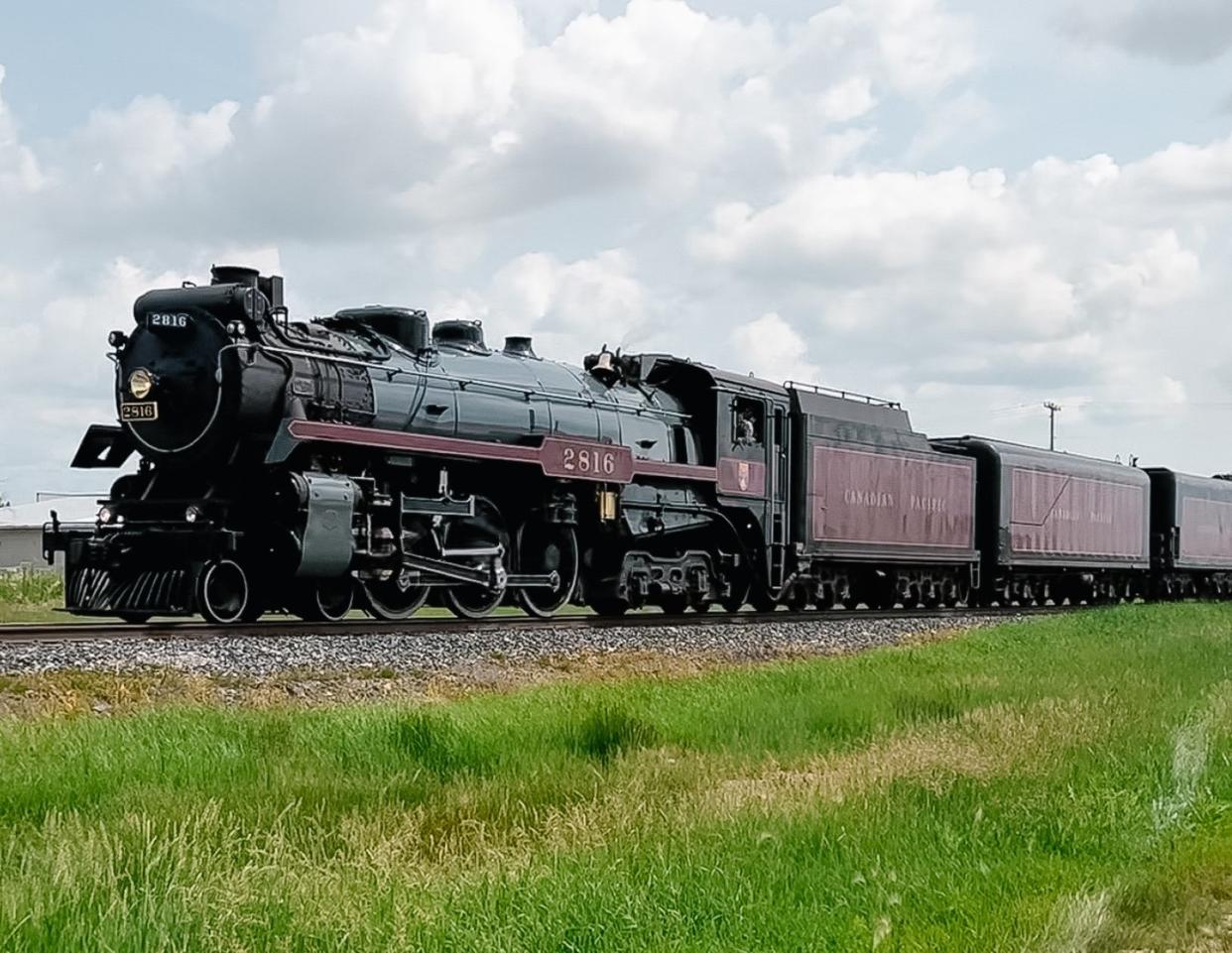Historic steam train passes through Niverville

On July 4 at approximately 3:18 p.m., history passed through Niverville.
It’s called the Final Spike Steam Tour, a three-country trek featuring The Empress 2816, a 4-6-4 Hudson-type steam locomotive built in 1930. The Empress is on her way to Winnipeg where she’ll be making one last stop on her 11-stop tour.
This once-in-a-lifetime steam train tour began in Calgary and wound its way east to Moose Jaw before heading south. The Empress made pitstops in seven American cities, turned around in Mexico City, and then headed back north to Winnipeg.
On Saturday, July 6, Manitobans will have an opportunity to see the Empress 2816 up close, learn more about its history, and enjoy a ride on the Puffer Belly Express mini-train, a quarter-scale steam locomotive model.
The event will be located at the CPKC Winnipeg Yard at 949 Jarvis Avenue in Winnipeg. The train will head back to Calgary, headquarters for CPKC, after the Winnipeg tour is complete.
The CPKC is the combination of two historic railways, Canadian Pacific (CP) and Kansas City Southern (KCS), both founded in the 1800s.
Established in April 2023, the CPKC created the first and only transnational rail network in North America. The objective is to move essential goods across 20,000 miles of railway supporting the Canadian, American, and Mexican economies.
It was also in April 2023 that the final spike for the new railway network was ceremonially driven into the ground, thus completing the continental connection.
The Final Spike Steam Tour kicked off exactly one year later in celebration of the CPKC’s first year.
“CPKC is fortunate to have a unique group of railroaders committed to restoring 2816, named The Empress, for a once-in-a-lifetime cross-continent trip,” the company’s website states. “Their job descriptions are anything but straightforward, with each member of the team bringing a unique jack of all trades set of skills to the project. For this group of railroaders, the steam locomotive restoration project has become personal—a connection to the past and a chance to add a piece of themselves to the 2816’s story.”
In preparation for the restoration, the team of rebuilders tapped into the wisdom of a number of 80- and 90-year-old CP pensioners whose familiarity with the 2816 was like reuniting with an old friend.
“Retired CP master mechanic George Doerr has been a significant part of the work on 2816,” the CPKC website says. “George was hired on in Winnipeg in 1947 when steam was king and remembers 2816 like it was yesterday. He even provided a passport-sized Canadian Pacific notebook from 1961… to help the steam crew with a bearing refurbishment project on 2816’s tender.”
The 2816 comes with its own rich history. It ran throughout the Great Depression, World War II, and was finally taken out of commission in the 1960s, replaced by the more affordable and efficient diesel engine.
The 2816 averaged, at times, up to 18,000 miles per month. In its years of use, it is estimated to have run more than 3.5 million miles, far more than most diesel locomotives of the same age.
“These are very robust, overbuilt, heavy-duty machines,” says Jonathan Morris, Manager Operating Practices, Steam. “It would leave Winnipeg running at 100 miles an hour. Eight hundred fifty miles later, it would arrive in Calgary where it would be turned, serviced, and sent east again. It would do this seven days a week.”
Without question, there is something beautiful and mysterious about the old steam engine. It evokes, for many, a sense of nostalgia and historical relevance.
“In an increasingly digital age, where speed, innovation, and affordability overtake delayed gratification, the 2816 represents hope—an antithesis to the monotonous search for the next big thing and a reminder of the joy of resurrecting a job done well,” says the CPKC website. “For the steam team and their fans, it embodies the delight of stumbling across a passion and the surprise of finding that generations of others are, and have always been, waiting for you there, too.”
Brenda Sawatzky, Local Journalism Initiative Reporter, The Niverville Citizen


